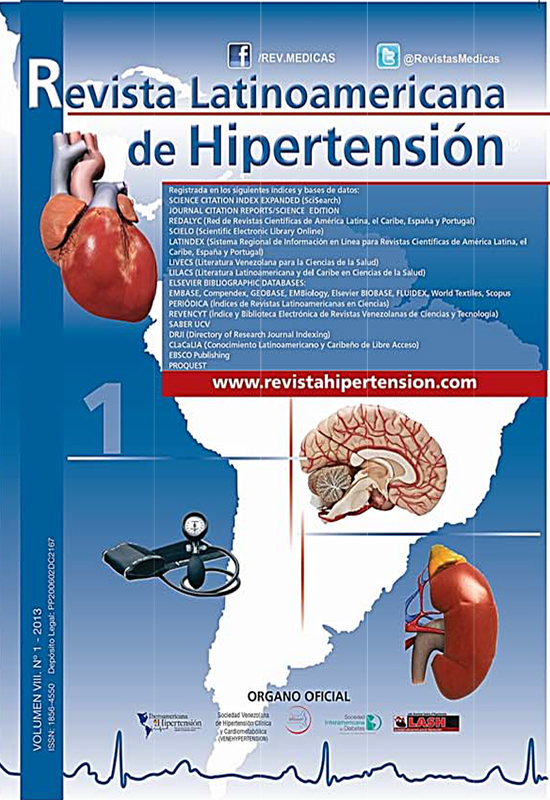High-sensitivity c-reactive protein epidemiological behavior in adult individuals from Maracaibo, Venezuela
Palabras clave:
Cardiovascular disease, low-grade inflammation, risk factors, metabolic syndrome.Resumen
Objectives: High-sensitivity C-Reactive Protein (hs-CRP) is one of the most applied inflammation markers; therefore, the main objective of this research is to evaluate its epidemiological behavior in adult subjects of the Maracaibo City, Venezuela. Materials and Methods: A total of 1,422 subjects, 704 women (49.5%) and 718 men (50.5%), were enrolled in the Maracaibo City Metabolic Syndrome Prevalence Study. The results were expressed as medians and inter-quartile ranges (p25-p75). Differences were determined through the Mann-Whitney U test and one-way ANOVA test with the Bonferroni adjustment. A multiple logistic regression model was designed for the analysis of the main factors associated with high serum hs-CRP levels. Results: Overall hs-CRP median was 0,.372 mg/L (0.126- 0.765 mg/L), 0,382 mg/L (0.122-0.829 mg/L) for women and 0.365 mg/L (0.133-0.712 mg/L) for men; p=0.616. An increasing pattern was observed in hs-CRP concentrations through age, BMI, waist circumference and HOMA2-IR categories. After adjusting for independent variables, a greater risk for elevated hs-CRP levels was observed with female gender, hypertriacylglyceridemia, obesity, diagnosis of metabolic syndrome and very large waist circumference values. Conclusions: Elevated hs-CRP levels are related to the metabolic syndrome but not with each of their separate components, being a greater waist circumference one of the more important risk factors, but only at values much higher than those proposed for our population.Descargas
Los datos de descargas todavía no están disponibles.

